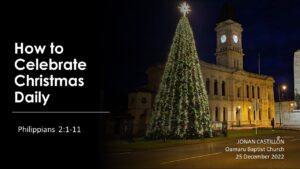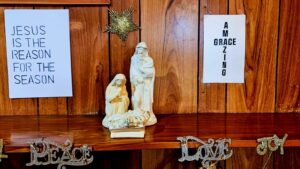My message for today is to deal with the subject of WISDOM in relation to our faith, and this, of course, is linked to Obeying God.
Stops and Slow Downs, TEE GLT, OBC Sings Original Music
OBC NEWSLETTER 25 FEB 2023 – The plans of the diligent lead to profit as surely as haste leads to poverty (Proverbs 21:5).
Christmas Greetings, Season’s Events, New Year’s Sunday
BAPTIST CHURCH NEWSLETTER 23 DECEMBER 2022 Do not be afraid But the angel said to them, “Do not be afraid. I bring you good news that will cause great joy for […]
Christmas’ Shining Light, Schedules, Working Bee, New Year 2023
OBC NEWSLETTER 17 DECEMBER 2022 – No amount of beautiful lights could match Jesus Christ, who illuminates the whole world from the darkness of sin.




